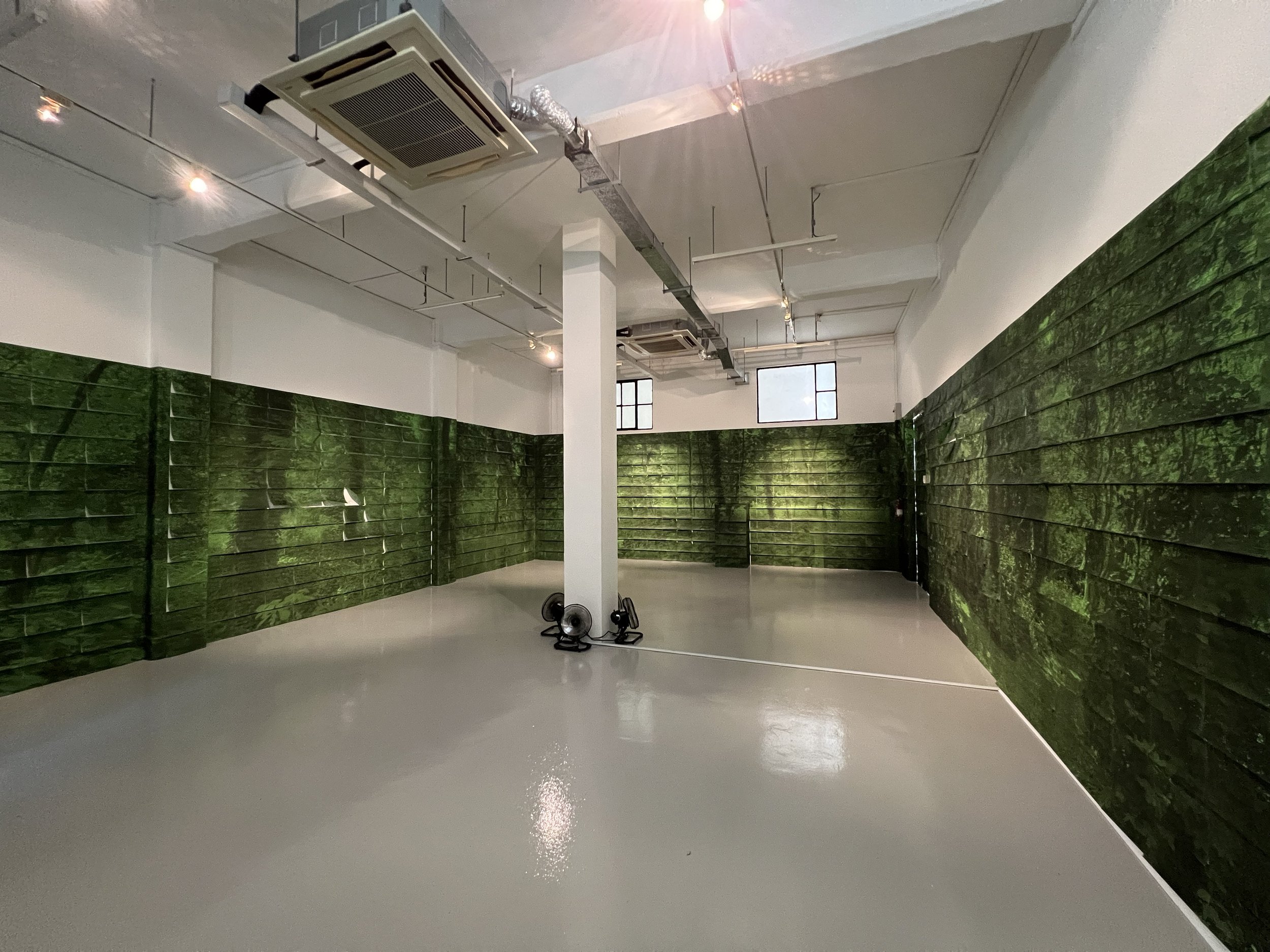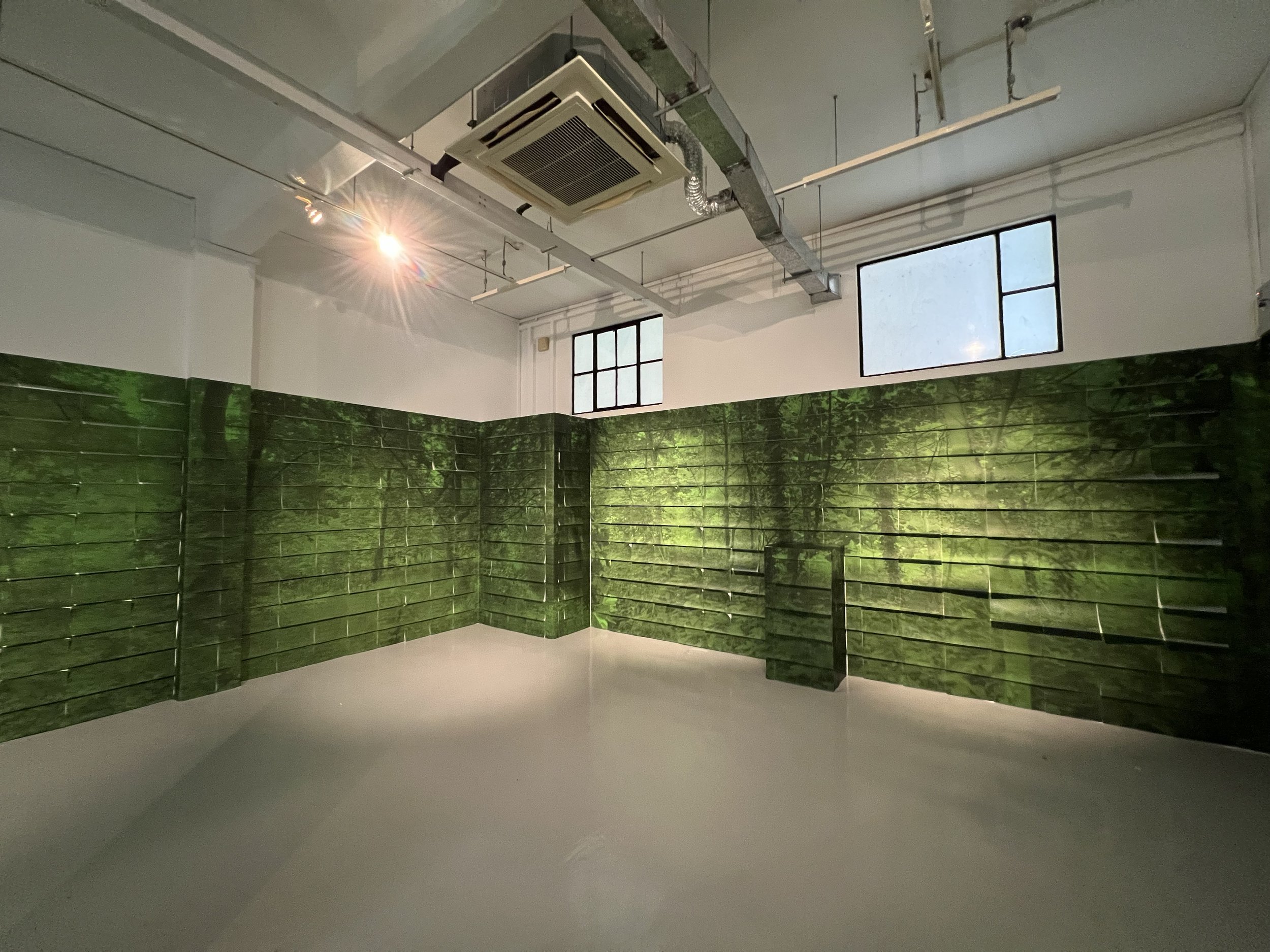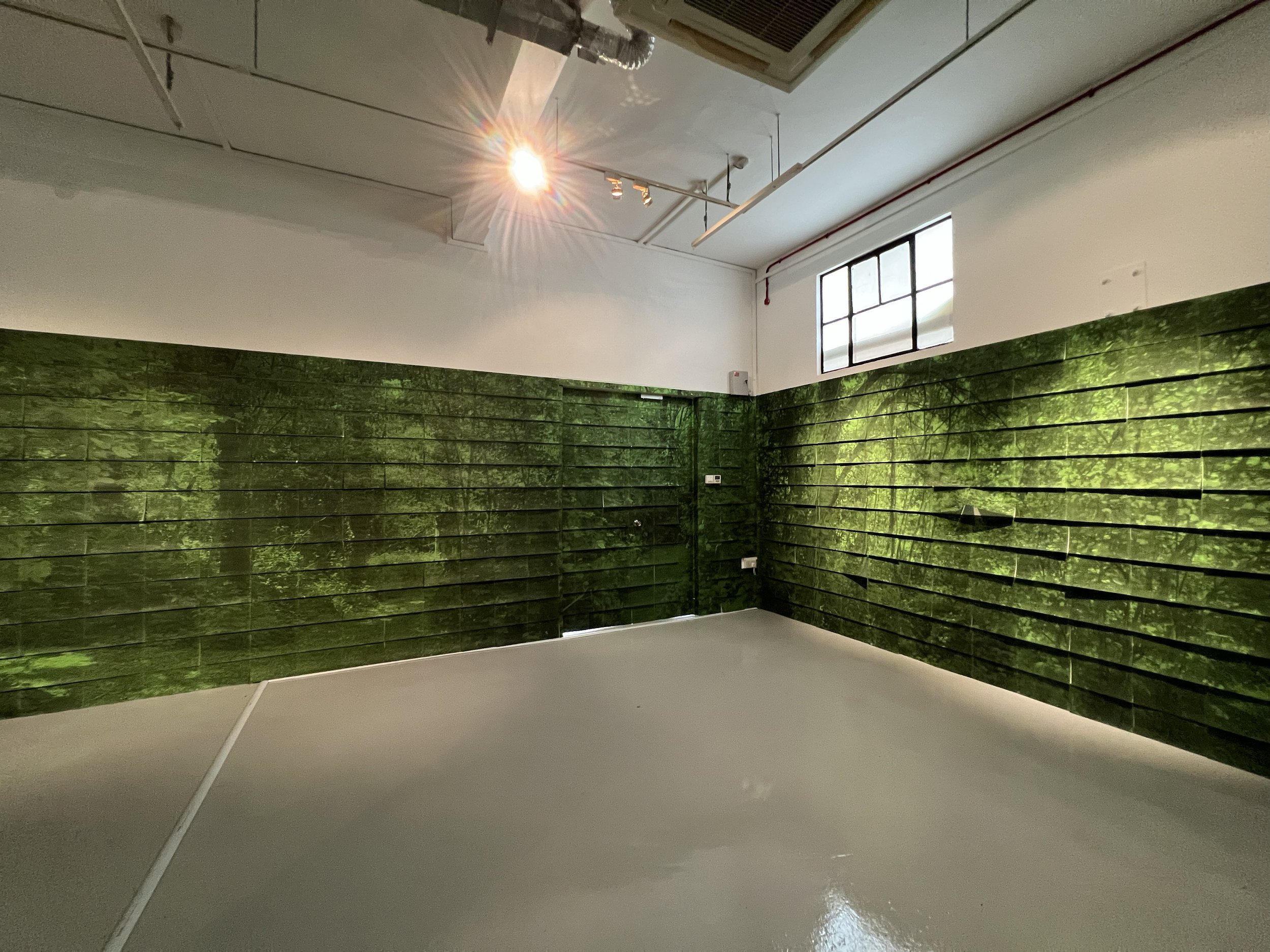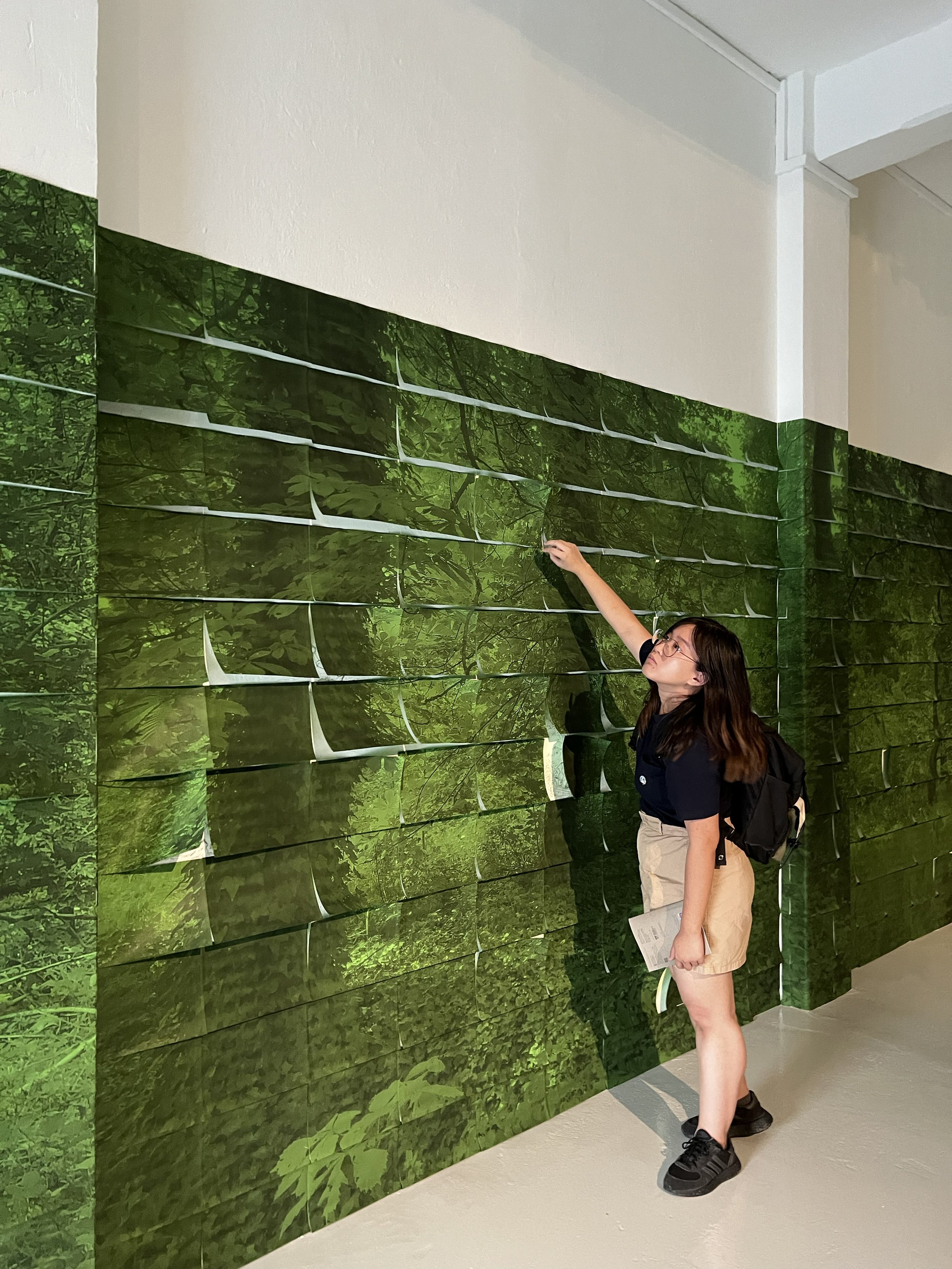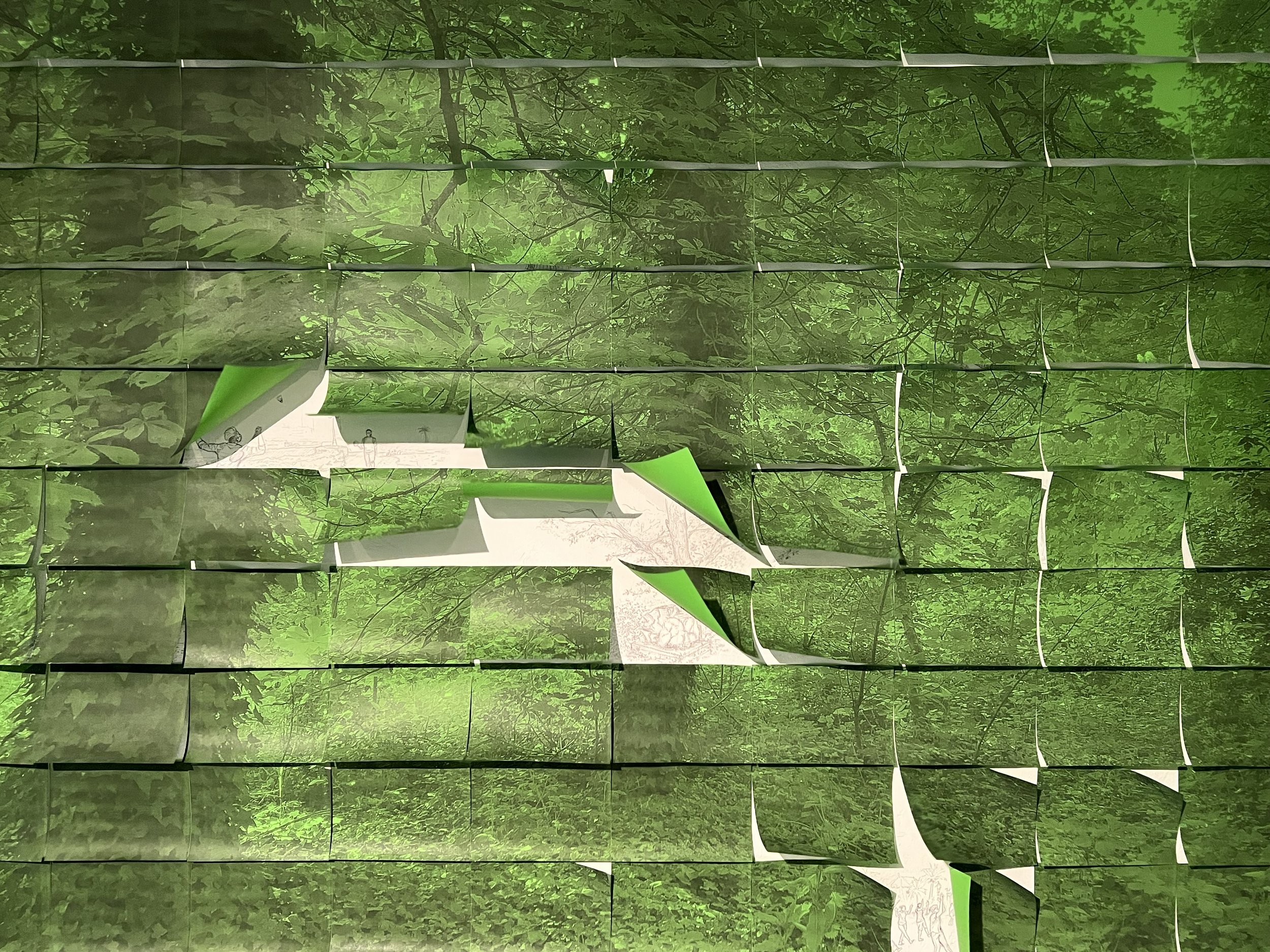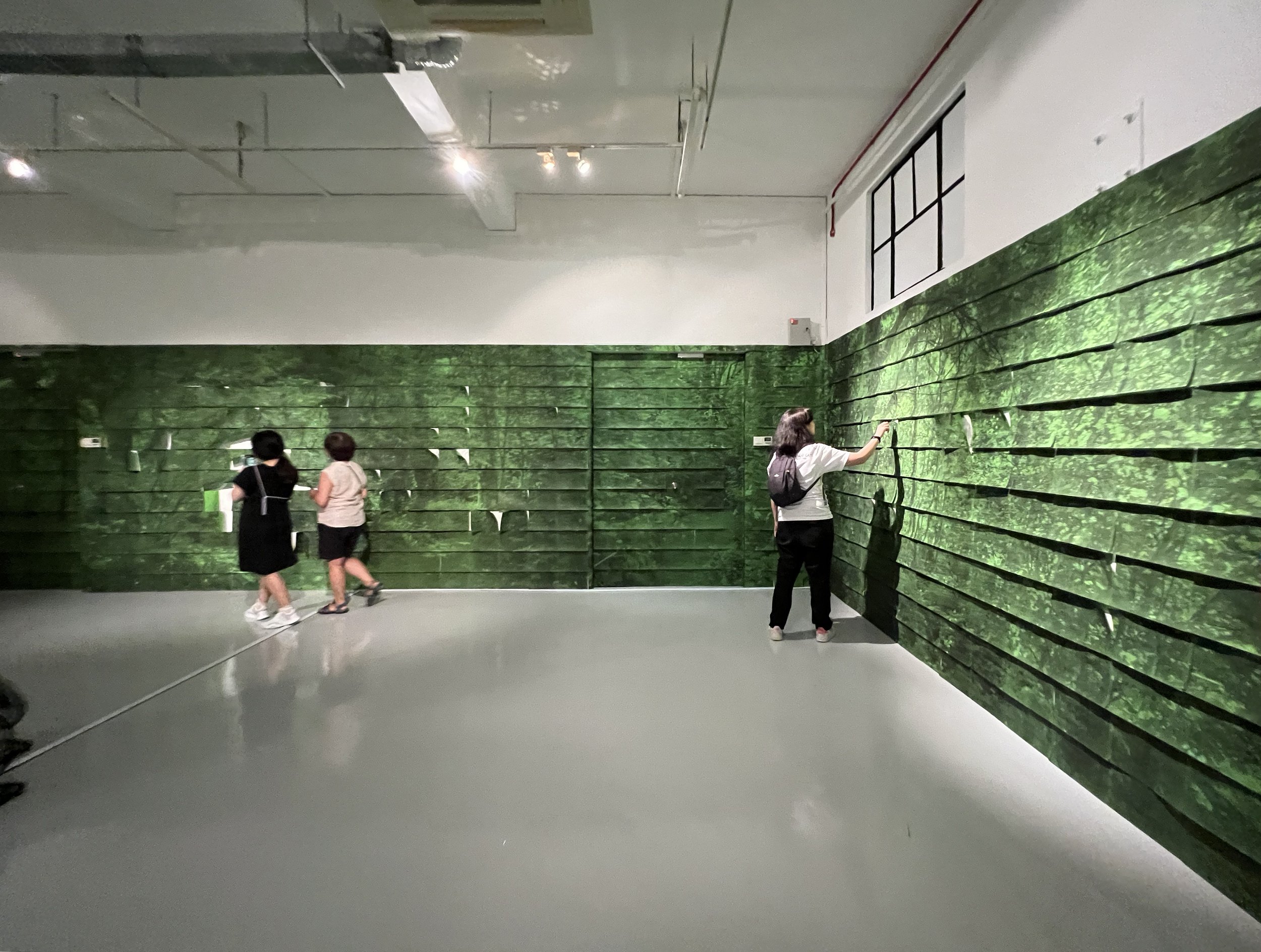
Vibrating Park-Forest (2023)
Site-specific installation of printed papers, pencil drawings on walls, fans
H:237 x W:945 x D:613 cm
Drawing assistants: Sheares Quek & Yue Yu
Supported by SEA AiR—Studio Residencies for Southeast Asian Artists in the European Union, a program by NTU Centre for Contemporary Art Singapore funded by the European Union, with residency partner Villa Arson (Nice, France)
Pursuing my intersecting interests in architecture, the politics of public space, and place-making practices, I look at urban parks as sites of contestation, refuge, community building, and emancipation. The work draws from my comparative research of heterogenous practices that unfold in the Bois de Vincennes in Paris, Hong Lim Park in Singapore, and the former Democracy Park in Phnom Penh.
In 1931, Bois de Vincennes hosted the International Colonial Exhibition, a showcase designed to boast the ‘accomplishments’ of colonialism wherein pavilions modelled after indigenous architectural styles housed displays of the ‘native’ cultures of the colonies. Some of these structures outlived the temporary exhibition and are still extant today. In the late 1970s, the Cameroon Pavilion was transformed into a Buddhist temple known as La Grande Pagode. In the spring, thousands of Cambodians living in France swarm to the temple to celebrate Khmer New Year occupying the adjacent grounds with picnic mats and makeshift stalls. The community’s appropriation of a public space previously used to stage Eurocentric (mis)representations of those very colonial subjects struck me as a self-powered emancipatory practice of place-making and community-building.
Known for its Speaker’s Corner—an area where, upon registration with the authorities, citizens can hold demonstrations and political speeches—since 2009 Hong Lim Park hosts Pink Dot, an annual rally of thousands of people in support of LGBTQ communities, freedom of love, and inclusiveness in a country where male same-sex relationships have been criminalised until 2022. Phnom Penh’s former Democracy Park has a history of entanglement between colonial power, the nation state, and the people. Created in the late colonial period, throughout the 1950s the park was used to celebrate the country’s independence and parade the nation building process. In recent years, it became a designated site for political demonstrations until it was closed off to the public following anti-government protests in 2014.
The layered meanings of these urban parks are conveyed in this immersive and experiential installation, where the forest is made of a mosaic of pulsating paper tiles. Fluttering delicately to the movement of the air, the forest’s ‘leaves’ reveal underneath drawings. They depict a diverse range of events that take place at those sites, from manifestations of state power to grassroots initiatives and other informal modes of appropriation by which marginalised communities reclaim public space to enact their agency.
— Adapted from text written by Anna Lovecchio for the exhibition Hoo Fan Chon, Citra Sasmita, Vuth Lyno: New Works (NTU CCA Singapore, 2023)
